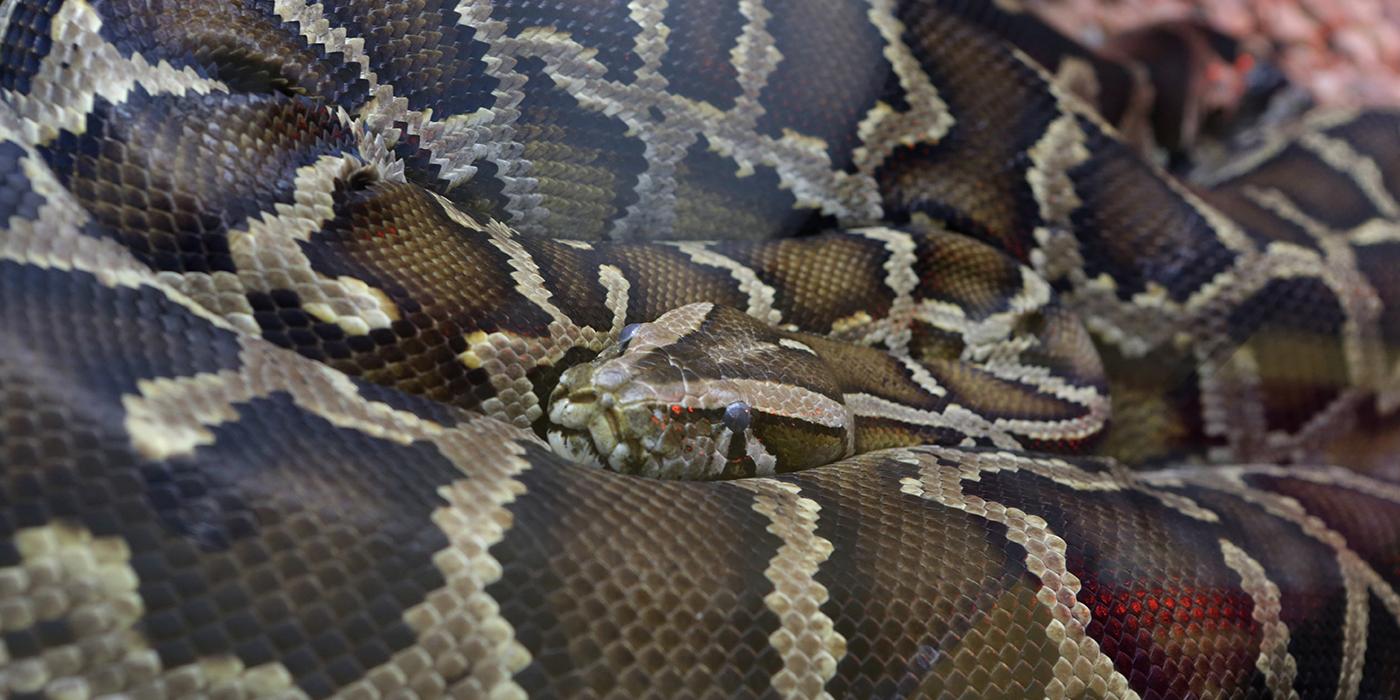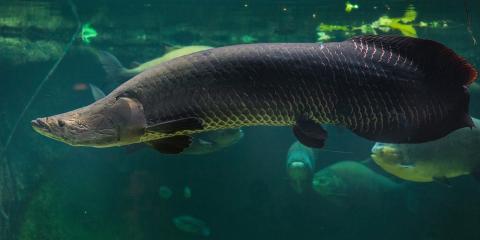Physical Description
The body of a Burmese rock python is longer and thinner than the anaconda's. Because the body is long, the organs are also long. Snakes usually have only one lung, but the python has two, one of which is considerably smaller than the other. Basic body color can be pale tan, yellowish-brown or gray. They have large, reddish blotches outlined in cream or gold.
Pythons are constrictors, so they don't have fangs. They do have back curving teeth that grab the prey and don't allow escape.
Size
The Burmese python is the largest subspecies of the Indian python and one of the six largest snakes in the world. Lengths of over 15 feet (4.6 meters) are common, and they may exceed 22 feet (6.7 meters) in human care, however the average is about 16 feet (4.9 meters) in length. Females are the larger of the two sexes and often have different coloration and a smaller head relative to the body.
Native Habitat
Burmese pythons are found in southern China, Burma, Indochina, Thailand and the Malay Archipelago. Burmese pythons live in rainforests near streams, although they survive in a variety of habitats, such as grasslands, swamps, marshes and rocky foothills. Populations depend upon a permanent source of water.
Lifespan
Burmese pythons live about 30 years in the wild.
Food/Eating Habits
Burmese pythons prey upon mammals, birds and reptiles of appropriate size. The presence of domestic fowl and pigs attracts them to agricultural developments.
In the wild, snakes do not eat every day. Burmese pythons spend their mornings soaking up the sun's warmth, enabling them to move around to look for food. If they are successful in their hunt for prey and lucky enough to eat, they spend the next several days or weeks keeping warm enough to digest their meal. They swallow prey whole. The jaws separate and allow the Burmese rock python to take in an animal four to five times as wide as its head.
At the Smithsonian's National Zoo, the Burmese python is fed large rodents and rabbits every two to three weeks.
Reproduction and Development
Burmese pythons reach sexual maturity in four to five years. Males breed at 7 to 9 feet (2.1 to 2.7 meters) and females when they are at least 9 feet (2.7 m). The Burmese python breeds in early spring. They may lay as many as 100 eggs, in March or April. The average clutch is about 35 eggs. Unlike most snakes, the female coils around the clutch and stays with the eggs until they hatch. She does not feed during this period, which may last two or more months. Burmese pythons actually incubate their eggs by raising the temperature within the coils by as much as seven degrees above the air temperature. This is accomplished by frequent hiccupping or muscle spasms. Once the babies hatch, they are on their own and must fend for themselves. They hatch at about 12 to 18 inches (31 to 46 cm) in length.
Conservation Efforts
Burmese pythons are widespread throughout their range but their numbers are diminishing. When encountered in the bush, it is often killed for its skin, meat or the simple fact that it is a snake. Hundreds of thousands are killed for their skins, which are made into shoes, belts and other goods. Snakes are essential as rodent controllers and without them, many crops are destroyed by mice infestations.
Help this Species
- Be a smart consumer! Avoid animal-skin products, even those marked “faux,” to ensure you’re not contributing to the illegal hunting of this species.
- If you see a snake in the wild, leave it alone and encourage others to do the same. Don’t assume it is a venomous species, and don’t attack it if it doesn’t pose a threat to your safety. Tell your friends and family about the eco-services that snakes provide, such as keeping rodent populations in check.



